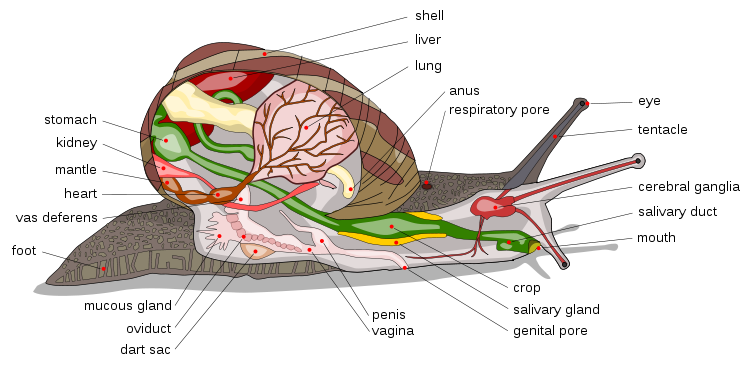
Reproduction
Although not much is known specifically about the S. hirsutum's reproductive patterns, some land snails are dioecious while most are hermaphroditic, meaning that they have both sexual organs. Also, land snails do not perform asexual reproduction and only few like the Neohelix albolabris and Zonitoides nitidus perform self-fertilization (Hottop, 2005).
In terrestrial habitats, animals without means of aquatic or flight dispersal might be expected to show higher levels of population differentiation (Irwin, 2002). Dispersal ability is also connected to species conservation because they may be sensitive to environmental disturbances as well as loss or degradation of habitat (Anderson, 2007).
 The
beginning of reproduction can be started by a courtship process that
consists of touching and crawling which can last for hours (Hottop, 2005). Once arranged for copulation, an exchange of spermataphores, bundles of sperm, occurs. Once inside the body
the spermataphores release their sperm and the sperm and egg meet in
the fertilization chamber to combine
(Hottop, 2005).
The
beginning of reproduction can be started by a courtship process that
consists of touching and crawling which can last for hours (Hottop, 2005). Once arranged for copulation, an exchange of spermataphores, bundles of sperm, occurs. Once inside the body
the spermataphores release their sperm and the sperm and egg meet in
the fertilization chamber to combine
(Hottop, 2005).
Image of Land Snail Anatomy
After fertilization has occurred, the egg passes down the spermoviduct which coats the eggs with a covering that feeds and protects them (Hottop, 2005). For most land snails, it is common to lay their eggs in holes in the ground or under logs (Hickman et al.. 2007).
There are two types of life paths in land snails after reproduction. One is semelparous, which means that the adults reproduce once then die, or two is iteroparous, where adults reproduce and live to reproduce again (Hottop, 2005). There is no information on which category S. hirsutum fits in to.
In places like Pennsylvania, reproduction has been linked to seasonal changes and favorable weather (Hottop, 2005).
Go to the next page to learn Stenotrema hirsutum Interactions!
Go back to the Home page!